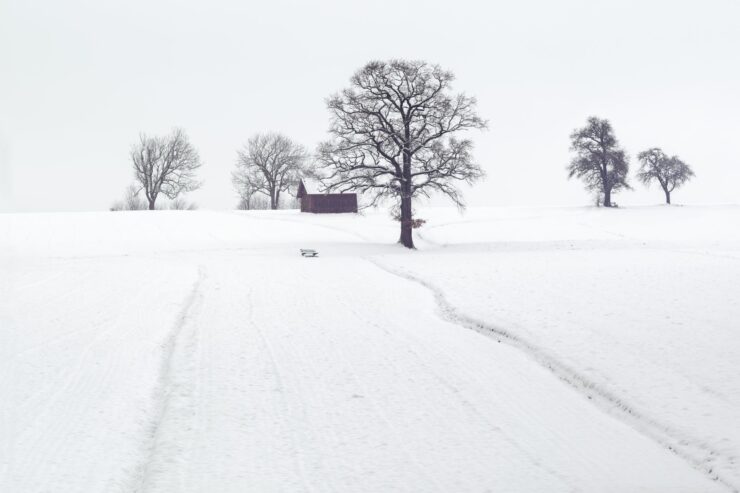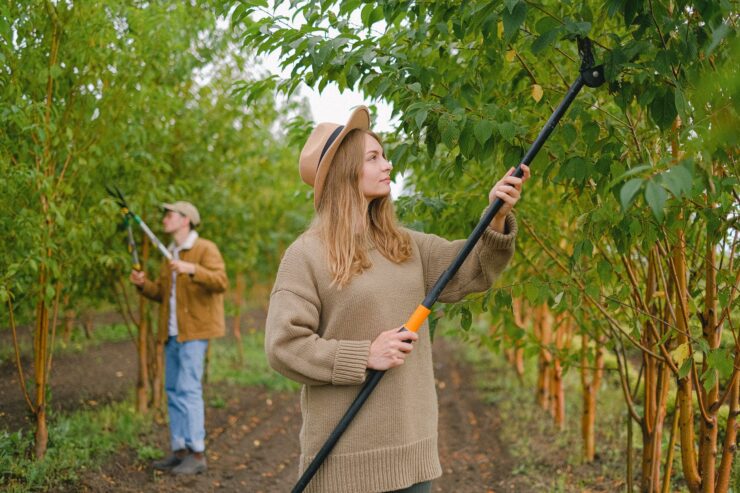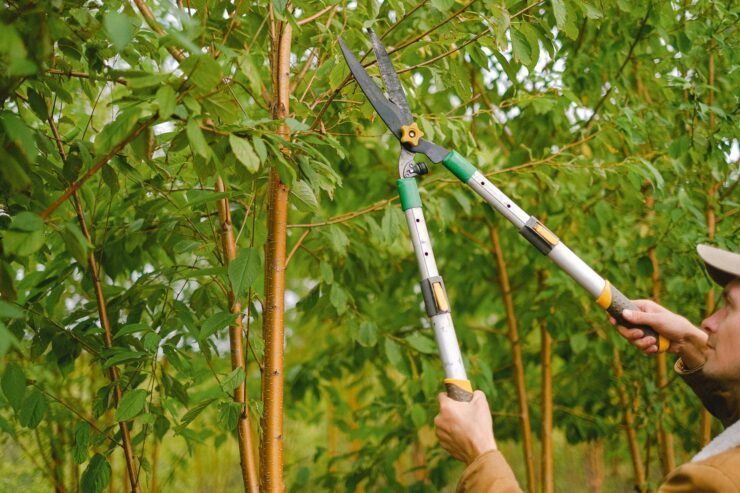Pruning your trees is a great way to ensure they stay healthy and strong. Winter tree pruning has many benefits. According to tree experts, winter pruning produces more pleasing outcomes. Some significant tree pruning, such as pruning fruit trees, should be done only in winter. This maximizes their fruit production. Winter is the only season when trees and plants go dormant. Pruning trees before springs is beneficial for the active growth of trees and plants. These are just a few reasons tree pruning in the colder months can be a good idea.
Winter Is A Better Time To See Branches
We are afraid of the cold and gusty winds that make it difficult to get out to our yards for winter tree trimming. Winter is, however, the best time to prune trees. The tree’s structure and shape can be seen without any foliage. It is easier to identify and remove dead or diseased branches. It is easy to identify and trim branches that are not in harmony with the overall tree growth pattern.
Winter’s cold temperatures freeze the ground, making it easier to get larger tree-trimming equipment for the tree.
Both tree pruning and tree removal can be time-consuming. While pruning, you are at risk of injury every time you climb or descend a tree. Fatigue and distraction can increase the likelihood of injury. So, it is always recommended to hire a professional expert for tree trimming tasks. Check out Findlocaltreeservice.com for reliable tree removal and pruning services.

Winter Is A Time When Trees Are Dormant
Usually, you can cut or trim trees throughout the year. However, winter is best due to its dormant condition. Trees are hard at work in the spring and summer to grow and cultivate. Trees may also produce fruit and flowers, depending on their variety. All activity ceases in winter. The trees go dormant and then rest as they do not compete for actions within the tree; dormancy is the ideal time to trim trees.
Winter Is A Better Time To Protect Trees From Disease
After a tree is trimmed, the cold winter weather protects it. A tree can be infected if it is cut. Pests and microbes may use these wounds to gain entry into the tree. This could lead to the spread of diseases. Many pests can also go dormant in winter. Trees trimmed in winter are less susceptible to being infected by bacteria, fungi, or insects.
Spring’s Growth Is Just Around The Corner
Tree trimming is done to encourage growth. To ensure that energy is not wasted, it is essential to get rid of dead or damaged branches. Instead, energy will be directed to nutritious branches. Trees will be ready for spring by trimming just before they begin to grow. After a winter trimming, trees are more likely to produce more and grow stronger.

Winter Pruning Maintains Your Property Look
Winter pruning allows you to shape your trees to grow in the best way for your property. This includes avoiding interfering with walkways and structures or encouraging or restricting growth.
Pruning trees in winter is beneficial for adjacent small plants. At this time, all plants are dormant, so it is less likely to get disturbed. Because the ground is firmer, the equipment can cause soil compaction.
Evaluating Tree Structures In Winter Is Easier
It’s much easier to identify the tree structure when the leaves fall. It makes it easier for you and your professional tree removal expert to determine the damaged or hazardous branches. This allows us to decide if the tree needs trimming or pruning for healthy production growth.
Tree Safety Is Improved Over Winter
Winter storms can bring downwind, snow, and ice, making it dangerous to have dead, damaged, or dying trees. To remove hazards from your home and family, dormant pruning is recommended.
It can also revitalize weaker trees, making them safer by removing diseased and deadwood.

Best Practice For Tree Pruning
The majority of pruning tasks are limited to removing broken, chafing, injured, or dead branches. Occasionally, it is essential to prune tree branches that are higher than a sidewalk, street or roof.
It is not necessary to thin a tree so that air can pass through its crown. This is known as “lion tailing” and can cause the tree to be exposed to heat during summer. Never cut more than 20% of the treetop leaf area if trimming live branches.
When To Prune
After winter pruning, the tree will have an entire growing season to seal the cuts. Pruning should be limited to two times per year. The first prune is during active spring growth flushes, usually in April and May. The bark can easily be torn during this time. This can cause a larger wound that the tree will need to seal. This happens during the fall colouration. This is when serious decay risks are highest. Oak wilt can be a problem in certain areas. You should limit oak pruning from April to June.
Tree Pruning Tips For Winters
We always advise pruning trees on dry or temperate days. This is not only more enjoyable for the gardener, but it also prevents the spread of waterborne diseases and damage from freezing climates.
• Pruning early in winter is a bad idea because incisions can dry up if temperatures drop below freezing.
• Pruning is a process that involves removing dead or diseased branches. First, you should consider trimming trees damaged by winter snow and ice.
• It is essential to remove any lower branches from evergreen trees and shrubs that are not needed in the winter.
• To improve the light and air in the crown of your tree, remove any branches that are too small or overgrown.
• Your goal should be to preserve the structure of your tree by keeping the branches in good condition.
• Always trim branches directly from the nodes. The node is the point where one branch or twig connects with another.

Bottom line
Winter tree pruning has many benefits, but it does not apply to all trees. You have to understand that plants and trees with new blossoming must generally be trimmed in winter or early spring. Old growth must be pruned later in spring and summer. An annual pruning program is recommended to keep your trees healthy.
Talk to one of our tree removal and trimming experts, and we will create a customized pruning plan tailored to your property’s needs that will help keep your tree healthy and enhance productivity.




























